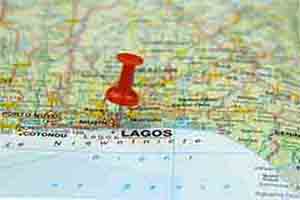Since the discovery of the internet and subsequently, the World Wide Web, activities related to buying and selling using the internet has become an integral part of global marketing strategies.
Entrepreneurs, especially retailers latched onto the medium in order to exploit its ability to reach a massive audience and increase market share, as the medium helped to defy geographical and demographic boundaries.
This foray culminated into what has come to be known today as e-commerce. Classified into several categories such as Business to Consumer, B2C, Business to Business, B2B, Consumer to Consumer, C2C, and so on, e-commerce especially the B2C category is valued at over 1 trillion dollars today.
According to a snapshot study by Dataquest (a unit of Gartner Group, Inc.), electronic commerce accounted for $31.2 billion of the world’s business transactions in 1999 alone, up from $11.2 billion in 1998. The rise in the volume of transactions represented an approximate three-fold increase.
Fast-forward to 2013, a survey conducted by Jones Lang LaSalle recently, on global e-commerce and retail logistics, revealed that global online retail has grown 14.8 percent on average per year from 2007 to 2012. It noted that total B2C e-commerce sales were expected to exceed $1.2 trillion in 2013 alone.
However, the participation and consequent contribution to this growth statistics vary and differ significantly from country to country and largely determined by economic status and strength.
While the developed countries like the United States, United Kingdom, France, and Germany have seen huge growth in e-commerce, little has been seen from the developing world. As a matter of fact, when developing countries appeared in the picture, countries like China, Mexico, Brazil and India were referred to. No mention was made of Africa let alone the Sub-Saharan region, despite the recent growth witnessed in that sector from countries like South Africa, Kenya and Nigeria.
The reasons are not far-fetched, under the parameters for measuring the success rates for e-commerce, the sub Saharan Africa barely stood a chance.
Some of these parameters according to International Telecommunication Union, ITU include but not limited to: High rates of internet and mobile broadband usage – with internet penetration averaging around 77 percent; low fixed and mobile broadband costs, typically under 2 percent of monthly incomes; a willingness of internet users to purchase online as indicated by a high digital buyer penetration rates among internet users; a regulatory infrastructure that supports online purchasing including secure online payment systems; and most importantly, a well developed logistics infrastructure which supports efficient online order fulfilment.
This last point is a critical factor that impedes e-commerce growth in the sub region. The
reason is simple. Within the continent, there is little or no organised retail structure, instead
there are small and medium enterprises filling the basic retail needs. In addition to this
challenge, the sub region scores low on other parameters like internet availability and cost of
broadband services, the implication is that these small businesses, further constrained by their
inability to access efficient delivery systems and other logistics needs, never stand a chance
of migrating successfully to e-commerce.
In Nigeria for instance which typifies the scenarios in most of the countries in the region,
big players like Rocket Internet’s Jumia, Kaymu and Naspers-backed Konga.com have to
build their own networks of logistics systems to meet their online fulfilment orders. In the
absence of any other alternative and reliable transport or postal systems, huge separate investments have been dedicated to building these logistics platforms.
Although this strategy has helped them to take increased control of their supply chain, deliver order to customers quicker as a competitive advantage, it has undoubtedly constrained their profit margin. More so, to reach some corners of the country that also present potential for e-commerce growth, they have to rely on international logistics providers like DHL to fulfil orders. The implication is that if the cost for successful e-commerce transaction is to be counted, small players without access to the necessary investment in such infrastructure never stand a chance.
The problem here is that for real impact to be felt, small online retailers must feature prominently in the picture but without the requisite logistics and infrastructure, this cannot happen.
Experts believe that logistics is the heart and soul of e-commerce and Nigeria like other countries in the sub region, doesn’t have the requisite infrastructure to make outsourcing for instance, a sensible proposition. They argue that the costs associated with outsourcing logistics will eventually sink players facing vertically-integrated e-commerce players.
They further argue that small businesses don’t avoid e-commerce simply because they can’t make websites or the costs of integrating payments. They avoid e-commerce because delivering goods across African cities alone presents huge challenges. And coupled with inefficient payment system, there are few courier companies, if any at all, that will handle cash on delivery on a retailer’s behalf; and cash on delivery is still a major driver of e-commerce in the region.
In the end, they argue, it is the e-commerce player that integrates logistics into their offering that will win this battle.
It was on this premise that the Managing Director of Kaymu Nigeria, Evangeline Wiles while speaking on this challenge recently noted that large retailers have set the bar high for SMEs who are just looking to break into e-commerce market, adding that, “For small retailers, one of the most pressing challenges faced is poor delivery and tracking systems.”
“The proliferation of SMEs into e-commerce,” she said, “presents new challenges for this sector that do not yet have the capacity to overcome them without help. To address this challenge, e-commerce platforms have to provide technical assistance to sellers on their platforms by providing SMEs market intelligence, spotting opportunities and developing specific delivery solutions for SMEs to effectively work in the online marketplace.
She therefore called on delivery companies to operate a functional delivery process that facilitates prompt and efficient delivery tracking system as this is pertinent to SME and e-commerce growth in the country.
Wiles argument here is worthy of note because for the e-commerce boom to happen, these SMEs must be integrated into the value chain.
More so, a striking idea behind her argument is the opportunity presented for innovative ideas that other entrepreneurs could take advantage of, to build a separate logistics business that will cater to the needs of this sector as far as e-commerce is concerned.
E-commerce in Nigeria is estimated to have grown to over 15 percent within the second half of 2014. According to the Terragon Group who conducted the survey, about 63 percent of Nigerians bought at least one item online within the period the survey was conducted.
Speaking on the survey, Terragon Group’s lead researcher, Eniola Moronfolu, had said that, “The increase in e-commerce activities is very encouraging for an environment such as Nigeria’s. It was interesting to note that a huge number of these purchases were mobile driven, and that mobile is the first and major point of access for all internet activities. Hence, marketers need to start thinking first of mobile for online campaigns.”
While it is true that marketers should begin to observe this trend and make some amendments on their approach to marketing strategies, the report was also an eye opener to the opportunities that lie in the sector. It is also an indication that should a more strategic approach be devoted to the addressing such challenges as logistics, the sector could well be reckoned with globally.
This was the same line of argument toed by Head of Marketing, DHL Express, Sub Saharan Africa, e-tailing, Mr. Sumesh Rahavendra, recently when speaking on a report: Global E-Tailing 2025: How e-commerce and logistics will drive growth in Sub Saharan Africa.
According to Rhavendra, “While e-tailing can facilitate the transaction of the changing consumer trends, the delivery of the product needs to be considered. Many retailers put significant focus to attract customers, but more effort needs to be made to facilitating flawless delivery to customers.”
He added that, “Even when deliveries begin being measured in minutes, as opposed to hours and days. This will require logistics to adapt, as well as deliver competitive advantages, such as offering same day delivery and flexible returns.”
Tags: digital marketing, marketing









